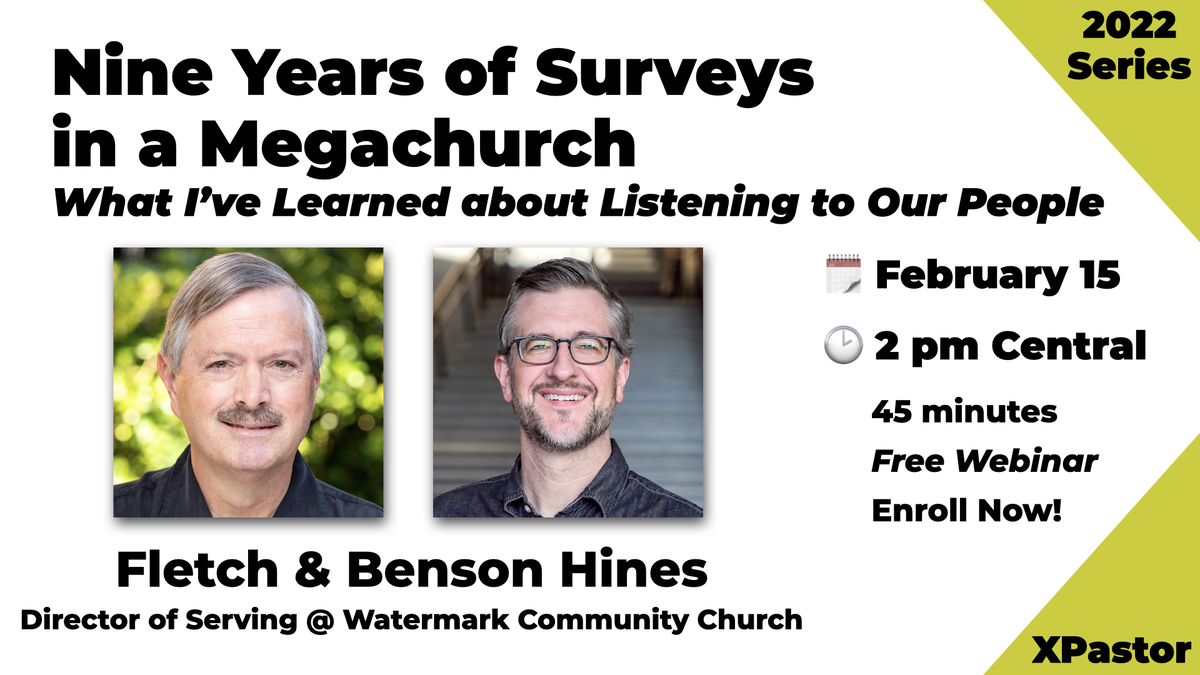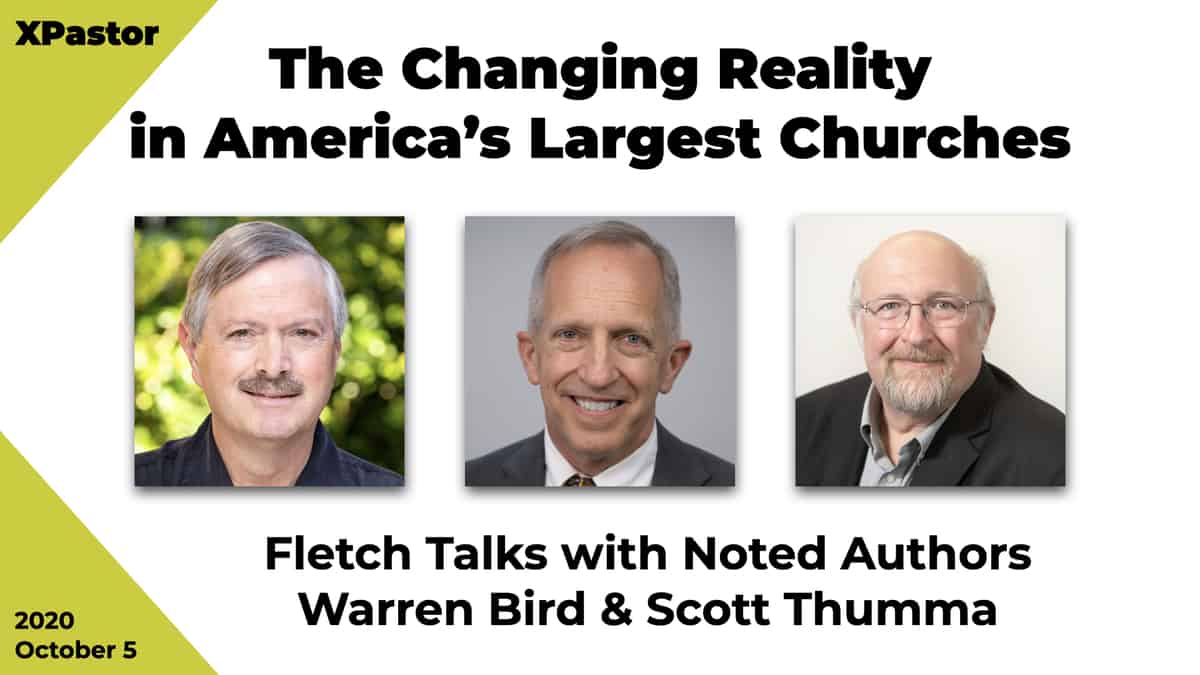Liberty Church is a dynamic, progressive church of 550 adults and 300 children in Tulsa, Oklahoma. Unusual for a Southern Baptist Church, it is governed by a Board of Elders—and the ministry is carried out through teams. The church has over fifty percent of the congregation involved in ministry. Liberty dares to think and act as a maverick, setting the pace for future churches. Yet, it was not always so …
After ten years as Liberty’s Pastor, Paul Taylor began to realize he and the church needed to change. Sometimes dictatorial and overseeing every detail, Brother Paul was not happy with who he had become. He believed the church could not grow as it was organized. The process of deciding on how and what to change took four years. In 2002, the church had changed to a team ministry concept and hired Nathan Baxter as Executive Pastor.
So now the XP has been hired, but what would be expected of him in the first year. High hopes marked Nathan’s entrance. But, how would Paul, Nathan, the Elders and church members cope with the first-year challenges of having a powerful XP manage the staff and oversee ministry?
Stirrings for Change
The Executive Pastor of Liberty is writing his Doctor of Ministry dissertation on the use of volunteers at Liberty. Baxter writes about the stirrings for change:
Liberty church was started in 1982. After twelve years, the church’s growth began to plateau. This triggered an effort to understand why the church was not growing as it had. One of the issues discovered was that the church had many very capable leaders in its congregation who were not being used in leadership positions. These positions were filled with professional clergy. Most of these clergy were trained in conservative seminaries and were very committed to the local church. They were given positions of decision-making and the congregation was supposed to get involved and rally around its leadership. The problem was that many of the staff were not gifted leaders. They were good men and women, but found themselves in the wrong positions.
Paul Taylor came to Liberty Church as the Pastor in 1986. Ten years later, through a gift assessment indicator, Paul realized significant traits about himself. He saw himself with the gifts of teaching, administration and exhortation. On reflection, one may wonder whether he saw administration as a gift or as a role that he filled.
The personality traits that he valued were being firm, strong and assertive. Yet, something else was happening—Paul was feeling overworked, “burning the candle at both ends.” Many people in the church who were capable of leadership were not in leadership roles. At this time, some might have seen him as being demanding. Being the pastor of a church required him to lead, to correct and ensure that everything at the church went properly. He saw himself as a driver of people and ministry. He was in charge and wanted the congregation to accomplish tasks. Some saw him as dominant and caustic. In order to survive, perhaps that was the way that successful pastors had to be.
The structure of the church put Paul and his staff at the center of all ministries. The Bylaws of the church were clear about the role of the Senior Pastor. He was in charge of all church services:
The Senior Pastor/Teacher shall arrange for and/or conduct all services of the church. He shall be chosen by the Elders and presented to the Church Body at a meeting(s) called for that purpose. In the interest of being sensitive to the Body, the Elders shall then invite response concerning his qualifications, capabilities, and calling. A final decision shall then be made by the Elders. The term of office is the same as that for an Elder.
This is common for churches and generally signifies that the Senior Pastor is the main preacher in the worship services and oversees the services.
While the following may be common in some Baptist churches, it accentuates the role and importance of the Senior Pastor:
Special meetings of the members may be called at any time by order of the Senior Pastor/Teacher, the Chairman or Vice Chairman of the Elders, or by a quorum of the members of the Elders. Notice of special meetings shall be given from the pulpit at least seven (7) days prior to the meeting.
The Pastor was in a powerful position, even able to call special meetings of the church.
Whether Liberty consciously desired to follow a business model, where some corporations have one person as Chairman of the Board, President and Chief Executive Officer, the church did invest in the Senior Pastor those titles and roles:
The Chairman of the Elders shall serve as the Chief Executive Officer and President of the Corporation and shall preside at all meetings of the Elders. He shall supervise the activities, officers, and employees of the Corporation under the oversight of the Elders. The Senior Pastor/Teacher shall be the Chairman.
The role of the Chairman is generally one of overseeing and guiding the Board, otherwise terms such as “moderator” or “facilitator” are used. This article in the Bylaws invested the Senior Pastor with the responsibility of overseeing the other Elders. This means that the Senior Pastor sets the agenda and chairs the meetings.
As the executive officer of the church, the Bylaws spelled out that it was his role to select new staff, or empower others under him to select new staff:
All other staff shall be chosen by the Senior Pastor/Teacher or his selected representative, subject to approval of the Elders.
On the positive side, this clause allows for delegation. Yet, it also requires that all staff be approved by the Elders. While this model may be effective for a church of two hundred and three staff members, it proved onerous with a staff of nine people.
What can be seen is that the governing structure of Liberty Church put the Senior Pastor in the nexus of all church ministry. The Senior Pastor was to conduct all services, be CEO, President, Chairman of the Elders and Personnel Officer. The pressures on the Senior Pastor must have been tremendous. As George Barna has pointed out, most pastors do not view leadership as their primary gift:
Barna goes on to say that “Leadership, for most pastors, is just one of those unfortunate duties they must endure as part of the deal that allows them to do that which really turns them on—preaching and teaching.”
This data from Barna fits with the changes that most Pastors desire. Ken Gangel begins his chapter entitled, Designing the Playbook: Creative Administration, with thoughts on the pressures:
A nationwide survey conducted by Your Church magazine discovered that 61 percent of pastors would spend less time in meetings if they could, 37 percent would spend less time mediating conflict, and 34 percent would spend less time counseling. If they could gain that time, they would spend it in evangelism (58 percent), personal devotions (66 percent), sermon preparation (73 percent), and prayer (75 percent).
The demands of the church were weighing on Senior Pastor Paul Taylor. He began to devalue the personality traits of the gentle shepherd, humility, care and kindness. His people skills were coming to an all-time low. Some were saying that he needed to be sensitive to the needs of the congregation and to understand their problems.
If this was Paul on a good day, then under pressure things could get worse. At times, some saw him as domineering and angry. Others might be more gracious in their assessment and say that he was “just intense,” or “the demands of being a pastor can call for that type of action.” If an intense situation arose, Paul might become moody or negative. One person said that he needed to “loosen up.”
What Paul needed to do was to better consider his actions and remove himself from some of the ministries of the church. But how? A church can only hire so many staff. He considered whether he had hired the wrong people for the staff. Who would pick up the pieces of ministry if Paul said he couldn’t oversee everything any longer? The Bylaws called for him to be the President, CEO, Peacher, Personnel Officer and Chairman of the Board. How could he and the church change?
Board Issues
Just as the Senior Pastor was a powerful position in the church, so was the Board of Elders. The Board was not elected or affirmed by the congregation, but new Elders were appointed by the existing Board:
The Elders shall select any new Elders. As the need arises the church members will be given the opportunity to suggest men for the office of Elder. A committee consisting of Elders shall review the suggestions. This committee shall bring a recommendation to the entire body of Elders. After a review and any possible changes, the Elders shall publish a list of proposed Elders to the church members inviting response concerning any questions about the qualifications of anyone on the list. After a period of not less than one month the Elders shall present the final list to the church members for the setting apart of those men to the office of Elder. The newly appointed Elders shall then begin to serve immediately.
This is done in other churches (see the Stonebriar Case Study where their board self-selects new Elders). The congregation of Liberty Church was invited to nominate and give comments on new Elders, but not to select them.
While the following item may be unique to the laws of the state of Oklahoma, it does signify that the Elders are overseers of the corporation. The Board of Elders were the members of the corporation, not the congregation:
The Corporation shall have no members. Any action which would otherwise require approval by a majority of all members shall only require approval of the Elders. All rights which would otherwise vest in the members shall vest in the Elders.
The Bylaws continue on this issue:
Nothing contained in Section 1 of this Article shall be construed to limit the right of the Corporation to refer to persons associated with the Corporation as “Members” even though such persons are not corporate members, and no such reference in or outside of these Bylaws shall constitute anyone being a corporate member. The Corporation may confer, by amendment of its Articles or these Bylaws, some or all of the rights of a corporate member, as set forth and determined by the Elders, upon any person or persons who do not have the right to vote for the election of officers or on a disposition of substantially all of the assets of the Corporation or on a merger or on a dissolution or on changes to the Corporations Articles or Bylaws.
This did not mean that attendees could not join the church. This means that congregants were not members of the Corporation.
Congregants could join the church and become members of the church, and voting privileges were extended to youth:
Membership in this church shall not vest in any member any proprietary rights in the Corporation, but shall only entitle the member to vote at meetings of the members on those matters submitted to the church membership by the Elders. Voting privileges are restricted to members who have passed their twelfth (12th) birthday. Membership shall not be assignable inter vitos by any member, nor shall membership vest to any personal representative, heir or devisee.
Other than not voting for Elders, and the approval of Deacons (see below), the Bylaws leave as unsaid the possible voting issues for the membership.
The entire text of Article VIII is next given, which shows the significance of peacemaking and dispute resolution in the church:
In any dispute arising between church members, pastors, or staff pertaining to any matters of spiritual teaching or practices, church finances or title to property purchased with church contributions, the dispute shall be resolved by the Elders of the church. A decision shall be reached after prayerful consideration in a spirit of humility, with each Elder regarding one another before himself.
With a strong Board, the church saw the need for a mechanism for members to approach the Board with issues:
Any church member with voting privileges may meet privately with the Elders by requesting to be placed on the agenda one week prior to the next scheduled meeting. Such requests may be made through the Pastor’s secretary.
Some saw this structure as not motivating volunteers for ministry. Some asked “why get involved as we can’t make decisions?” Others saw the structure as demoralizing. The strong Board approach allowed for input, but final decision-making, by the Elders. Further, the Board confirmed new members:
All requests for membership shall be made in person during those times set apart for such requests. The Elders will review all requests for membership and will present new members to the body.
Giving further clarity to potential problems and conflicts regarding church members, the Bylaws give the following under the title of “Principle of Elder Rule:”
The decisions made by the Elders concerning church membership shall be final and there shall be no appeal to any court from that decision.
Thus, the Board was the ultimate arbitrator of disputes in the church.
Instead of having a mechanism for rotation, the Bylaws show a preference for longevity. “The term of office for an Elder shall be for life, with the exceptions as outlined in Article VII, Section 5.”
The Bylaws also call for Deacons. The Deacons are to be selected by the members, interviewed and endorsed by the Elders and affirmed by the members:
Deacons shall be selected by the church members. As the need arises the church members will be given the opportunity to nominate men for the office of Deacon. The Elders shall interview these nominees in light of the qualifications stated in Article IX, Section 1. After a review and any possible changes, the Elders shall publicly post the list of the newly nominated Deacons. This list will then be presented to the church membership for their approval. These Deacons shall then begin to serve immediately.
Once selected, endorsed and affirmed, the Deacon is appointed for life. However, this aspect of the Bylaws has not been followed and the church sees it as out of date. Some leaders see the need for a major revision of the Bylaws. The Executive Pastors says, “we do not have Deacons but ministry teams who perform the biblical function of Deacons.”
This section shows that Liberty had Bylaws that empower a strong Board model, with limited voting and decision-making by the congregation. The previous sections showed that the Senior Pastor was the leader of the Elder Board, as well as undertaking his other responsibilities. With all of these duties colliding on one man, it is no wonder that Paul Taylor was feeling the need for a change.
The Perfect Storm
Liberty Church describes the events of 2002 as a Perfect Storm. The preceding sections show the origins of the storm. For several years the church had evaluated how to face those issues and grow to a new level of effectiveness. The leaders of Liberty Church assert that there are at least three events that caused the Perfect Storm.
Organizational Restructuring
The first factor was the conclusion of a four-year project of organizational restructuring. The church leaders even go so far as to say a complete restructuring. The Executive Pastor writes about the period:
In 1998, the Senior Pastor convinced the staff and the elders that it was time for the church as an organization to “reinvent itself.” He realized that the ministry management model was not producing the results he was looking for and that it limited the number of people who could serve. After serving twelve years as the Senior Pastor, he knew that the church needed self-renewal. There were many highly capable leaders in the church who were not in leadership roles. In many cases, they served under pastors who, although they were valuable to the organization, they simply were weak leaders. The organizational structure used was a traditional flat management model with straight-line organizational charts where the people at the top were paid and everyone else were volunteers. This method of organizing ministry, therefore, relegated men and women who were leaders in their secular jobs to very small leadership roles, simply because there was no room on the chart for them.
The church leaders desired to leave no area of the church untouched by their review and overhaul. Of major importance was the fact that the church went from a staff-led ministry to a team ministry concept. A significant term for the church was team. They wanted to move away from ministry leadership by a single man or woman. The Executive Pastor says the church calls this “ministry in isolation.” They wanted to move toward teams of gifted people working together to lead and perform ministry.
Once the restructuring was formed, a mechanism was needed to implement the plan. To achieve the restructuring, Liberty began a Strategic Leadership Team. The Strategic Leadership Team would be responsible for all the other teams and include both paid staff and volunteers. The Strategic Leadership Team would have oversight for Operations, Spiritual Formation, Outreach and Worship Arts. Key to Liberty’s model was utilizing both paid staff and volunteer staff (see below). Interesting to note is that from the inception of the Strategic Leadership Team, the church desired to put volunteer staff on that team. The church updated the term “staff” to include both paid and unpaid members. The church also recognized that for the organization to accomplish its ministry purpose, someone needed to lead the new Strategic Leadership Team, someone other than the Senior Pastor.
Envisioned Future
The second factor of the Perfect Storm was the adoption by the Elders of a five-year Envisioned Future. The Envisioned Future was adopted, as well as a statement of Vivid Description.
The Envisioned Future of Liberty Church
The overall visionary outcome for Liberty Church in five years is that every day someone receives Jesus Christ through relationships with transformed believers of Liberty Church.
The Vivid Description of Liberty Church
- That people who attend Liberty Church will use the front door of their home as an entrance to the church.
- That people who attend Liberty Church experience personal transformation through the pursuit of an intimate relationship with Jesus Christ.
- That people who attend Liberty Church find meaning in life by living with an eternal perspective as fully devoted followers of Jesus Christ.
- That people who attend Liberty Church will have their need to belong fulfilled in small loving communities.
- That people who attend Liberty Church embrace their call from God to evangelize the world.
- That the campus of Liberty Church is a vibrant redemptive center.
The church experienced the convergence of the three factors to create, what Liberty calls, A Perfect Storm. For example, the organizational reorganization from the first factor produced the Strategic Leadership Team. This Team would be a vital component of the second factor. To achieve the Envisioned Future, the Strategic Leadership Team would be needed to champion that vision statement. The Team would ensure that all other teams in the church were aligned with the vision and working toward achieving the vision. The goal was to keep all of the church’s energy focused in accomplishing the Envisioned Future.
Paid and Volunteer Staff
Just as the first two factors are tied tightly together, the third factor in the Perfect Storm is tied to the first factor. The church realized that it had many talented and gifted people as members and regular attendees. These men and women were willing to serve the church by giving significant amounts of time each week, some upwards of one or two business days.
From the first factor, in developing the Organizational Restructure, the leaders saw that the existing paid staff would be insufficient to implement the Envisioned Future. Further, there would be deep struggles for the paid staff as they tried to be effective in the new organization. To achieve the Envisioned Future, paid staff would need to serve in their areas of giftedness, calling, passion and experience. It would be important to evaluate the existing paid staff. Some of the paid staff might have to be retrained for their positions. Others might not make the adjustment and need to be relocated to other areas of the church or be moved off the paid staff to unpaid staff. Looking back, the Executive Pastor sees eight aspects of volunteerism needed in the church at that time:
- Volunteers need to be treated equally as the paid staff.
- Volunteers need to be recognized and rewarded.
- Volunteers need to be given serious levels of responsibility.
- Leaders of the organization need to be open to change and have credibility with the volunteers.
- The vision of the organization must be clear and clearly communicated with the volunteers.
- The paid staff must be willing to accept and respect volunteer co-workers.
- Volunteers need to have clear job descriptions or clear assignments.
- Volunteers need to be able to spend time with others in the organization to develop relationships and trust.
However, with the realization that volunteers were willing to serve as staff, this meant that volunteers would have to be evaluated to serve in their areas of giftedness, calling, passion and experience.
It would also be necessary to recruit unpaid team members. These people would need to be trained and empowered to serve in the new organization. The Executive Pastor notes:
There is nothing that indicates a volunteer is any less committed to an organization mission than its paid employees. In fact, it could be argued that a volunteer has a greater commitment because they are willing to sacrifice their valuable free time as compared to an employee who may use compensation as a motivator. It is critical that the leader of this type of an organization understand this important value. “Authorities generally advise organizational leadership to enact policies as comparable as possible for paid and non-paid personnel. They argue that by setting standards as high for volunteers as for employees, the agency engenders trust and credibility, increased respect and request for volunteers from paid staff, healthy work environment, an avoidance of stereotyping (viewing them as second class), and high quality services.” In his book, The Non-profit Handbook, Connors suggests that it be a matter of policy that during the interview with a potential volunteer it is stated that they are viewed as “unpaid staff.” This type of wording communicates the message that volunteers are important. Joan Patterson, a veteran volunteer manager, is convinced of the importance of proper treatment of volunteers. “I think a volunteer should be treated like a staff member. I am a real advocate for having a job description, a contract, training, and orientation. Volunteers deserve to be evaluated and be allowed to evaluate the program.”
Baxter continues with this idea:
It can be tempting to view the volunteer as a lesser than paid staff simply because they may not be spending the same amount of time as the paid employee, but their importance must not be overlooked. When volunteers perform duties and tasks and successfully provide responsibility for their duties given to them, it advances the organization. Peter Drucker puts it bluntly when he was interviewed on the subject. “You don’t treat them as “volunteers” but as staff members. The only difference is that they are part time and they are not being paid. But when it come to performance, performance is performance.” One example offered by Drucker that personifies his findings is Father Leo Bartel, Vicar for Social Ministry of the Catholic Diocese of Rockford, Illinois. This leader is quoted as saying that “volunteers of the past were “helpers” but now our volunteers are “colleagues.” In fact, we shouldn’t even talk of “volunteers” anymore; they are really “unpaid staff.”
Thus, Liberty desired to see the new class of volunteer staff as equal to paid staff.
Unique to Liberty’s plan was the desire to have volunteers lead and supervise some paid staff. The quality and commitment of the volunteers was sufficiently high to entertain the concept. The church considered this issue:
This next factor directly relates to the previous one listed. When a volunteer knows that their responsibility is one of consequence, it communicates to them that they do matter and, therefore, they are rewarded with a sense of contribution. A leadership maxim that communicates this point well is as follows: “The only way to make real leaders is to give them decisions that have real consequences.” In the volunteer organization, volunteers need to be entrusted with responsibilities that make a difference. This also acknowledges the fact that the volunteer has real skills and knowledge that are valued. In her book on volunteer recruitment, Susan Ellis says it well.
The thought is continued:
Another expert in the field has encountered the same challenges. He summarizes his findings on this challenge as follows: “One of the greatest fears among managers of volunteers is the tension between volunteers and paid staff. So prevalent is this fear that when asked to name the most difficult aspect of their job, twenty-one out of thirty managers of volunteers in organizations that have paid staff responded that it is tension between the staff and volunteers. Experts warn organizations that are preparing to recruit volunteers to be properly prepared so that they can avoid this common problem. This tension is a real problem and, left unattended, can exacerbate the very problems volunteerism was intended to solve.
Yet, for a volunteer to lead and supervise paid staff, there would need to be a culture shift by the paid staff. How would an ordained minister respond to being supervised by a lay person? Further, the shift would immediately bring out the desperate need to establish leadership training for these new volunteer leaders.
New Leadership
As the Perfect Storm grew in 2002, it became apparent to the Elders that some staff changes would need to be made. The church needed high-capacity men and women with leadership gifts to guide the teams and accomplish the vision. Further, the Elders quickly realized that some staff members would have to be trained to do other jobs or find another place to serve. This would also be true for volunteer staff. The church needed a new kind of leader to implement the Envisioned Future.
With the enormity of the task, many leaders said “clearly, the Senior Pastor cannot do all of this alone, nor is he gifted to do it all.” Paul Taylor was in his sixteenth year of ministry at Liberty and coming to new realizations about his gifts and abilities. Taylor had joined thrity-five other Senior Pastors in a three-year mentoring program. The program, Ministry Advantage, was recommended by Willow Creek Church of South Barrington, Illinois. Only eight churches completed the mentoring program, as the dropouts found they couldn’t finish the implementation stage of the program. Through the mentoring process, Taylor realized that he needed someone with different skills and abilities to make changes at Liberty.
Taylor had a new vision for his role at Liberty. To both Taylor and the Elders, it was important that as Senior Pastor that he invest his time by leading the Elder team, casting vision, being in prayer, and ministering the Word of God to the church. This was seen as the vital roles of the Senior Pastor. “It was a top-down style and I didn’t want that anymore,” says Taylor. “Nothing happened that I didn’t know about and that needed to change,” he continued. In a real sense, new leadership began with the Senior Pastor. He desired to change his role so as to increase his effectiveness. Taylor said, “I wasn’t gifted nor called to do these things,” and “I wanted to represent the people before God and be a better pastor-leader.” With great candor, Taylor continues: “I stymied the growth of the church because I was in control,” and “The church would have been bigger today if I had done this earlier.” Paul Taylor decided to give up certain authority and responsibilities so that he could focus on what the Elders agreed were the vital roles of the Senior Pastor.
It was determined that the church needed a new type of leader. It was decided that an Executive Pastor should lead the Strategic Leadership Team. The Executive Pastor would make sure that the new organization was working effectively with paid staff and volunteers. Though it did not know it at the time, the church was moving away from an hierarchical structure and toward a “QM” leadership structure as described and diagramed by Edward L. Naro
One can see from the diagram (see PDF below) the emphasis placed on teams and on the Strategic Leadership Team (represented as the Executive Steering Group in Naro’s diagram).
The Executive Pastor would ensure the harmony of these two groups of staff as they worked side by side. The Executive Pastor would assure that talented men and women were recruited and developed to lead the teams, and assure that all of the teams worked together to accomplish Liberty’s Envisioned Future. The Executive Pastor would be responsible to lead the new structure and develop a leadership culture that included training and launching high-powered leaders. The Executive Pastor would ensure that all teams and ministries were aligned to focus their resources, time, and energy to accomplish the five-year vision.
In February 2003, the Elders agreed to call Nathan Baxter as the Executive Pastor. Years before, Nathan had worked at the church as a youth minister and had subsequently served as a Senior Pastor in several churches. Because of this history, Nathan and Paul had a strong relationship of mutual trust.
The Elders agreed to call Nathan Baxter as the Executive Pastor in February 2003. When Baxter came to the church, he faced immediate challenges and questions:
- Would the Senior Pastor of seventeen years really relinquish the authority needed for him to do his job?
- How do you establish a mutually fulfilling relationship?
- Would paid staff really submit to the leadership of the unpaid staff?
- Which paid staff members could fit into the new structure and which ones needed to move on? How would their exits be handled? Since they were hired by the Senior Pastor, what should his involvement be if they were asked to leave?
- Could Baxter embrace the Envisioned Future established by the Elders? Was it realistic? Did it need improvement?
- What would be his relationship with the Elders?
- How would Baxter find “the leaders you can really count on” as quickly as possible since the desire to complete implementation of the plan was within five years?
- How would progress and success be measured?
Leadership Position Agreement
Your Position Title: Executive Pastor
Your Team Leader: Senior Pastor
Your Team That You Will Lead: Strategic Leadership Team
Purpose of Your Position
As the Executive Pastor, you will provide the vision and leadership necessary for the development of the strategic ministry that accomplishes the vision of Liberty Church. This is to be accomplished primarily by seeking God’s vision for the team, casting this vision to them, and leading them to accomplish this vision.
Purpose of the Strategic Leadership Team
To provide the day-to-day leadership needed to accomplish the vision and mission of Liberty Church.
Team Purpose of Each of Your Team Members
Outreach: To create many opportunities for people to hear and respond daily to the Gospel of Jesus Christ.
Worship Arts: To build a community of artists who unleash the arts to create transformational moments.
Spiritual Formation: To provide ministries that help all people become fully devoted followers of Jesus Christ and train them to be like Him.
Operations: To provide infrastructure and administration of resources that enables and facilitates the ministries of our church.
Your Core Responsibilities
Lead the Strategic Leadership Team to accomplish vision and to “do life together.” Lead by demonstrating Servant Leader Values. Lead in the development of the Church’s Core Values. Lead in alignment of all ministries with the church’s vision. Lead by building the Strategic Leadership Team and its members.
Your Position Specific Responsibilities
To Execute Tactical Responsibilities
- As a Strategic Leadership Team Leader: Provide for the ministry needs of each member of the Strategic Leadership Team. Develop and support the vision of each team member. Lead the team to work together to accomplish the ministry of Liberty Church. Provide regular team meetings that practice the presence of God, practice the presence of each other, and do the work of the ministry.
- Leadership: Provide leadership to the organization for the fulfillment of its mission. Provide training and development for all leaders of the church. Provide personal mentoring when needed to leaders. Make all ministry and operational decisions as needed. Foster an environment that consistently produces ministry teams that accomplish the mission of the church. Consistently provide vision for the development of the organization.
- Finances: Develop a spending budget that is directly tied to the vision of the church and your area of ministry. Be accountable for all spending for Strategic Leadership Team and their teams.
- Success: Develop a working definition/criterion of success for the Strategic Leadership Team and its members. Regularly lead teams to measure and evaluate all activities of the ministry.
- Leadership of Team Members: Consistently develop each team member. Provide regular team opportunities to “do life together.” Provide resources for the success of each team member. Oversee consistent research needed to develop the ministry of strategic leadership.
- Miscellaneous: Attend all Elders meetings providing communication between Elders and leaders. Meet weekly with Senior Pastor for direction and prayer. Be available to minister to others as needed throughout the congregation. Preach and teach regularly.
Servant-Leader Values
Core Values that should be a part of a Servant-Leader’s life
Value 1: Lead a spiritually surrendered life. Bring the gift of a self that is fully yielded to the Holy Spirit. Approach your work and your life with Spirit-controlled hearts (1 Tim. 4:7b; Rom. 12:1-2).
Value 2: Model a whole life commitment to the Church’s values and strategy. Live the life you’re inviting others to live. Pursue full devotion to Christ and do the work of an evangelist (1 Cor. 11:2; 2 Tim. 4:5).
Value 3: Maintain an infectious, optimistic, and enthusiastic attitude. Ask people with whom you work, “What can I do to help you?” Be a team player who has the best interest of the team at heart (1 Thes. 5:11; Eph. 4:29).
Value 4: Engage co-workers in honest communication. Do not allow things to go underground. Conflict resolution and meaningful communication must take place in an environment of openness, truth telling in love and sensitivity (Eph. 4:25).
Value 5: Approach your work with intensity. Maintain a fervent and dedicated spirit that perseveres in difficulty. Put your hand to the plow and don’t look back! Do all you can heartily and serve the Lord with determination (Col. 3:23-24).
Value 6: Honor and value volunteers. Motivate and encourage volunteers around you by giving them words of encouragement and appreciation. Write the note, make the call, give the gift that says “You and your ministry matter to God” (1 Peter 2:17).
Value 7: Keep an eternal perspective. Don’t lose the big picture and God’s ultimate desire and plan for your life and ministry. Remember why you are in this (1 Cor. 15:58).
Value 8: Pray! Pray! Pray! Pray for God’s supernatural intervention in the life of this church, your family, your ministry and your personal walk with Jesus. Humble yourself before God and expect Him to do great things as you seek to serve Him with all your might (1 Thes. 5:17; 1 Peter 5:6-7).
Common Church-Wide Core Value Responsibilities
To Preserve the Church’s Core Values
Church-Wide Core Values that should be a part of a Servant-Leader’s role:
Value 1: We believe that the anointed teaching of God’s Word is the primary catalyst for transformation in each person’s life and in the church.
Value 2: We believe that loving relationships should permeate every aspect of church life.
Value 3: We believe that lost people matter to God and, therefore, must matter to the church.
Value 4: We believe that the best environment for making fully devoted followers of Christ is the small group.
Value 5: We believe that participation in anointed worship is a necessary response to a loving God.
Value 6: We believe the church should remain doctrinally pure while being culturally relevant.
Common Church-Wide Alignment Responsibilities
To achieve the church’s goals to help everyone to become aligned.
- Develop and pursue semi-annual ministry plan meeting goals.
- Develop or modify Position Agreements each year and review the self-evaluations of each team member once each quarter.
- Develop processes, skills, and disciplines through all layers of quadrants, starting at your team and going out, ensuring that ministry procedures are tied to the vision of the church and that the efforts of volunteers are focused, effective, and consistent.
- Reinforce church core values by ensuring that all meetings are transformed into vision-casting events that encourage alignment behind the mission, vision, values, and strategic objectives of the church.
- Fully utilize Ministry Facilitators to help you in every way possible to do the work of alignment.
Common Church-Wide Team-Building Responsibilities
To Create a Sense of Direction and Community
- Team Leadership: Help instill the Programming/Ministry Arts vision. Develop Special Project Action Plans. Develop annual Ministry Specific Objectives. 1-on-1 meetings and huddles with the team. Complete other duties as assigned by the Strategic Leadership Team Leader.
- Team Management Processes: Manage and report information. Manage finances and expenses.
- Facilities: Care for your workspace. Care for shared workspace. Care for buildings and campus. Utilize the Campus Administration Team for building and grounds improvements.
- Team Building: Support your team in developing ministry specific goals and objectives. Schedule, plan, and hold regular team meetings to evaluate your team’s ministry needs and facilitate solutions. Hold regular team fellowships for community and encouragement which can be concurrent with regular team meetings. Provide leadership and methods to evaluate all ministry efforts of your team. Disseminate information and direction obtained from the team you are on as a member to the team that you are the leader—communication helps build excitement and enthusiasm for what God is doing in the church. Regularly and passionately communicate the vision and values of Liberty Church. Regularly and passionately communicate the purpose of your team. Recruit team members to complete your team and train them to be leaders. Conduct regular one-on-one encouragement and community sessions with team members. Encourage the development of leadership skills in your team members if they are also leaders of other teams. Determine and recommend training for overall skills, starting with self and throughout all layers. Provide direction in developing critical success factors. Help your team to understand the different roles and functions of servant-leaders church-wide (e.g. Campus Administrator is the point person for dealing with any physical aspect of Liberty Church—grounds, campus, buildings, etc.). Revisit the purpose statement of your team from time to time to see if it needs to be revised
View the footnotes and graphics in the original PDF: Liberty Church











